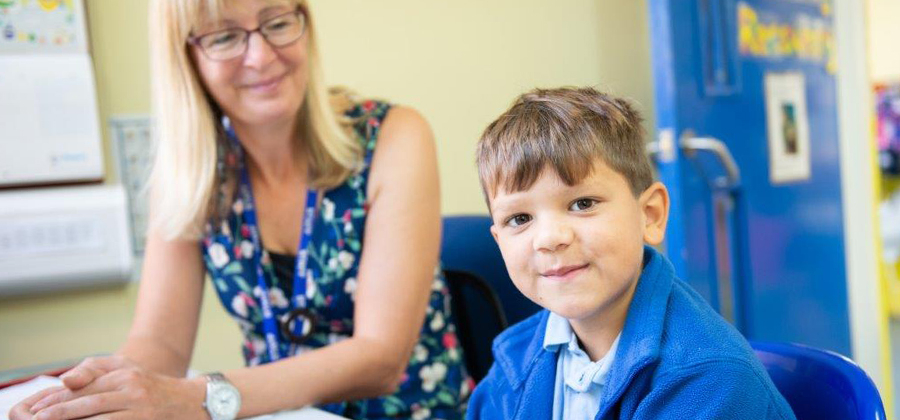At Glenfrome Primary School, phonics is taught using the Essential Letters and Sounds programme. This promotes a strong and systematic emphasis on the teaching of synthetic phonics to aid the teaching and learning of reading and spelling.
The aim of Essential Letters and Sounds is 'Getting all children to read well, quickly.' It teaches children to read by identifying the phonemes (the smallest unit of sound) and graphemes (the written version of the sound) within words and using these to read words.
Children begin learning phonics at the very beginning of Reception and it is explicitly taught every day during a dedicated slot in the timetable. Children are given the knowledge and the skills to then apply this independently.
Throughout the day, children will use their growing phonics knowledge to support them in other areas of the curriculum and will have many opportunities to practise their reading. This includes reading 1:1, in a small group with a member of staff or as a class.
Children continue daily phonics lessons in Year 1 and further through the school to ensure all children become confident, fluent readers.
We follow the ELS progression and sequence. This allows our children to practise their existing phonic knowledge whilst building their understanding of the 'code' of our language GPCs (Grapheme Phoneme Correspondence.) As a result, our children can tackle any unfamiliar words that they might discover.
Children experience the joy of books and language whilst rapidly acquiring the skills they need to become fluent independent readers and writers. ELS teachers relevant, useful and ambitious vocabulary to support each child's journey to becoming fluent and independent readers.
We begin by teaching the single letter sounds before moving to digraphs 'sh' (two letter spelling one sound,) trigraphs 'igh' (three letters spelling one sound) and quadgraphs 'eigh' (four letters spelling one sound.)
We teach children to:
- Decode (read) by identifying each sound within a word and blending them together to read fluently
- Encode (write) by segmenting each sound to write words accurately.
The structure of ELS lessons allows children to know what is coming next, what they need to do and how to achieve success. This makes it easier for children to learn the GPCs we are teaching (the alphabetic code) and how to apply this when reading.
ELS is designed on the principle that children should 'keep up' rather than 'catch up.' Since interventions are delivered within the lesson by teacher, any child who is struggling with the new knowledge can be immediately targeted with appropriate support. Where further support is required, 1:1 interventions are used where needed. These interventions are short, specific and effective.
During the summer term, a date is chosen to complete the national phonics screening check. Every child in Year 1 will be asked to work with a familiar adult to look through 40 words and read them using their phonic decoding skills. We will then report each child’s results in your end of year report in July. If a child does not manage to reach the pass mark they will have the opportunity to resit the phonics screening at the same time in Year 2. Phonics catch up groups will be in place for any child who needs further phonics teaching after Year 1.
For more information please read the documents below.







